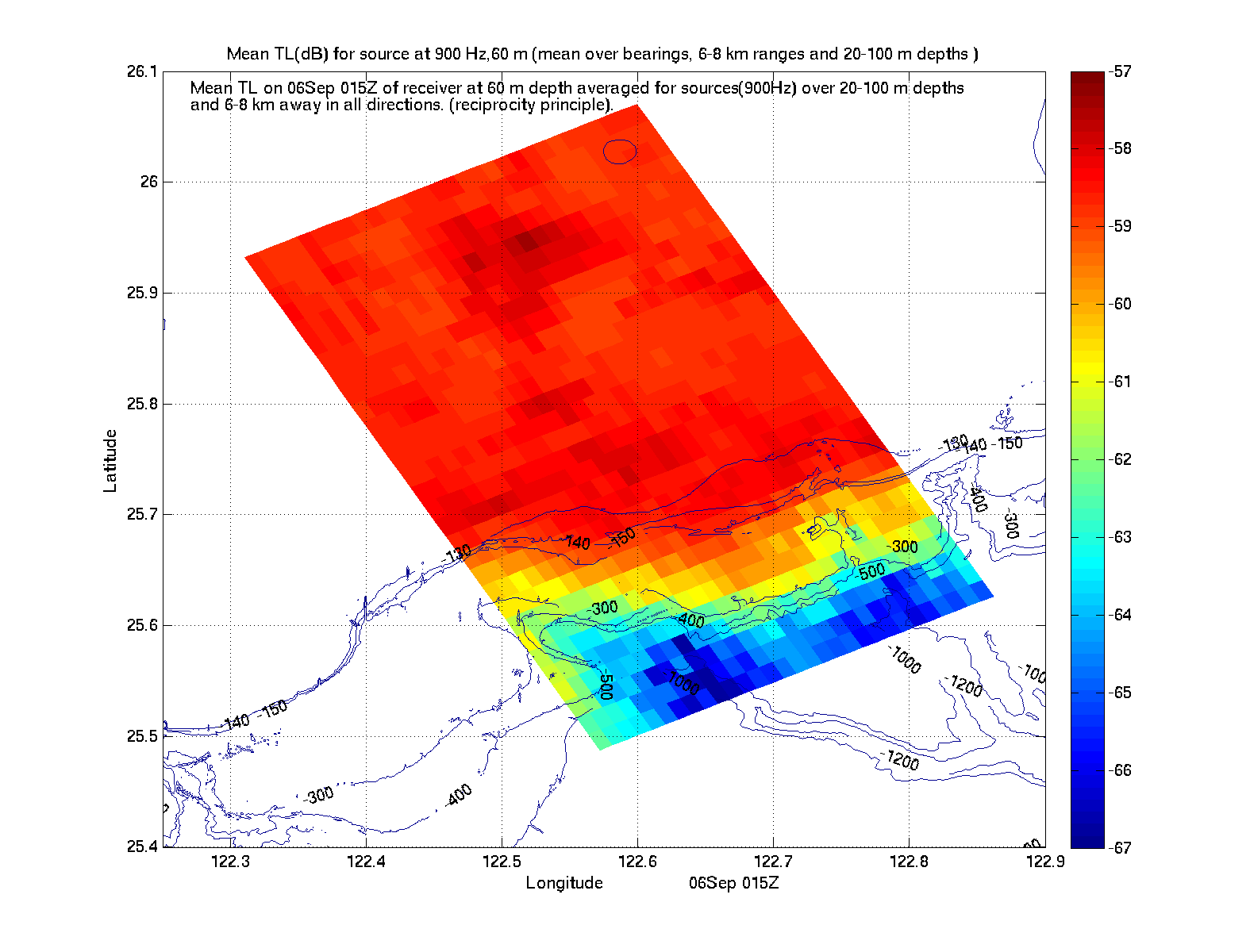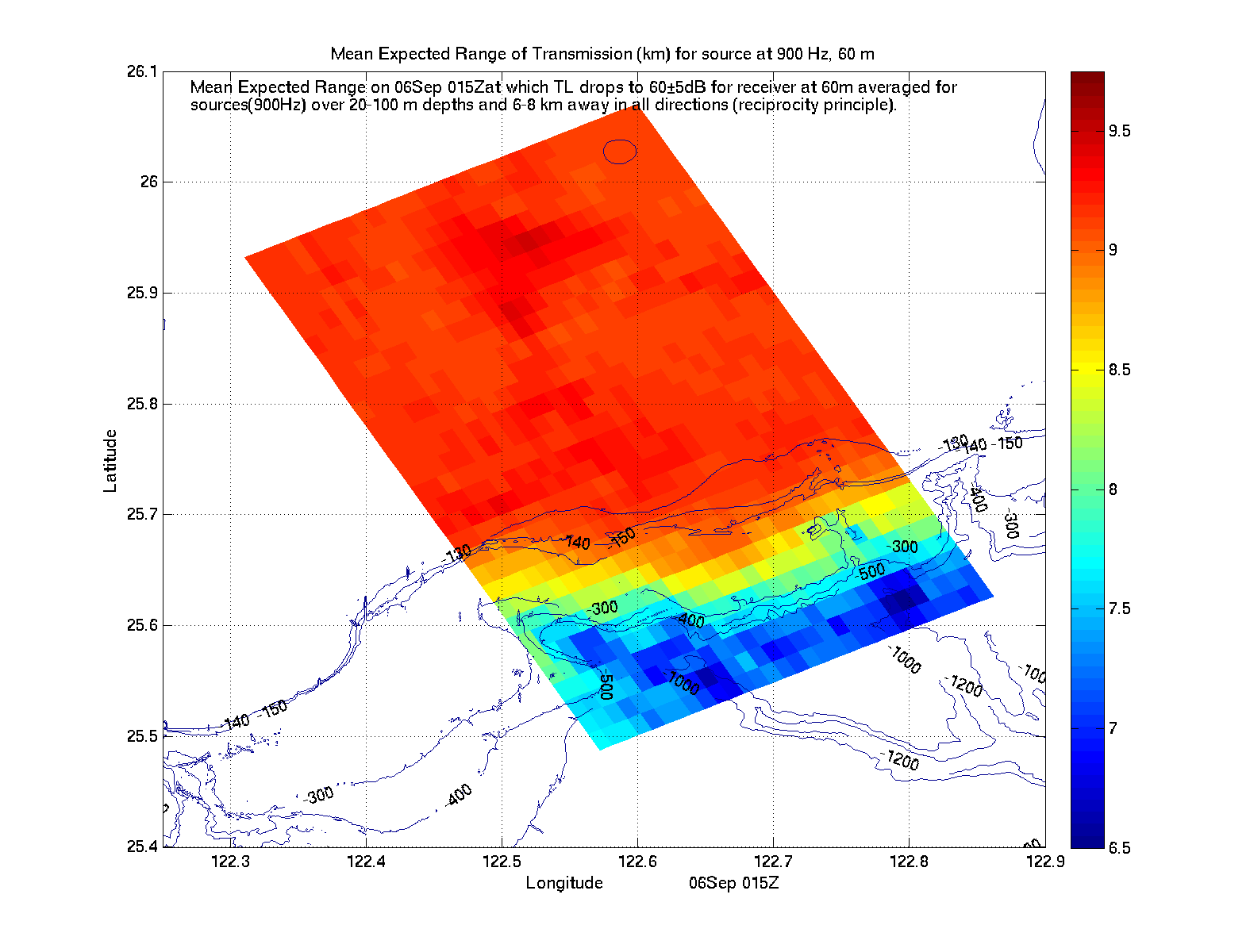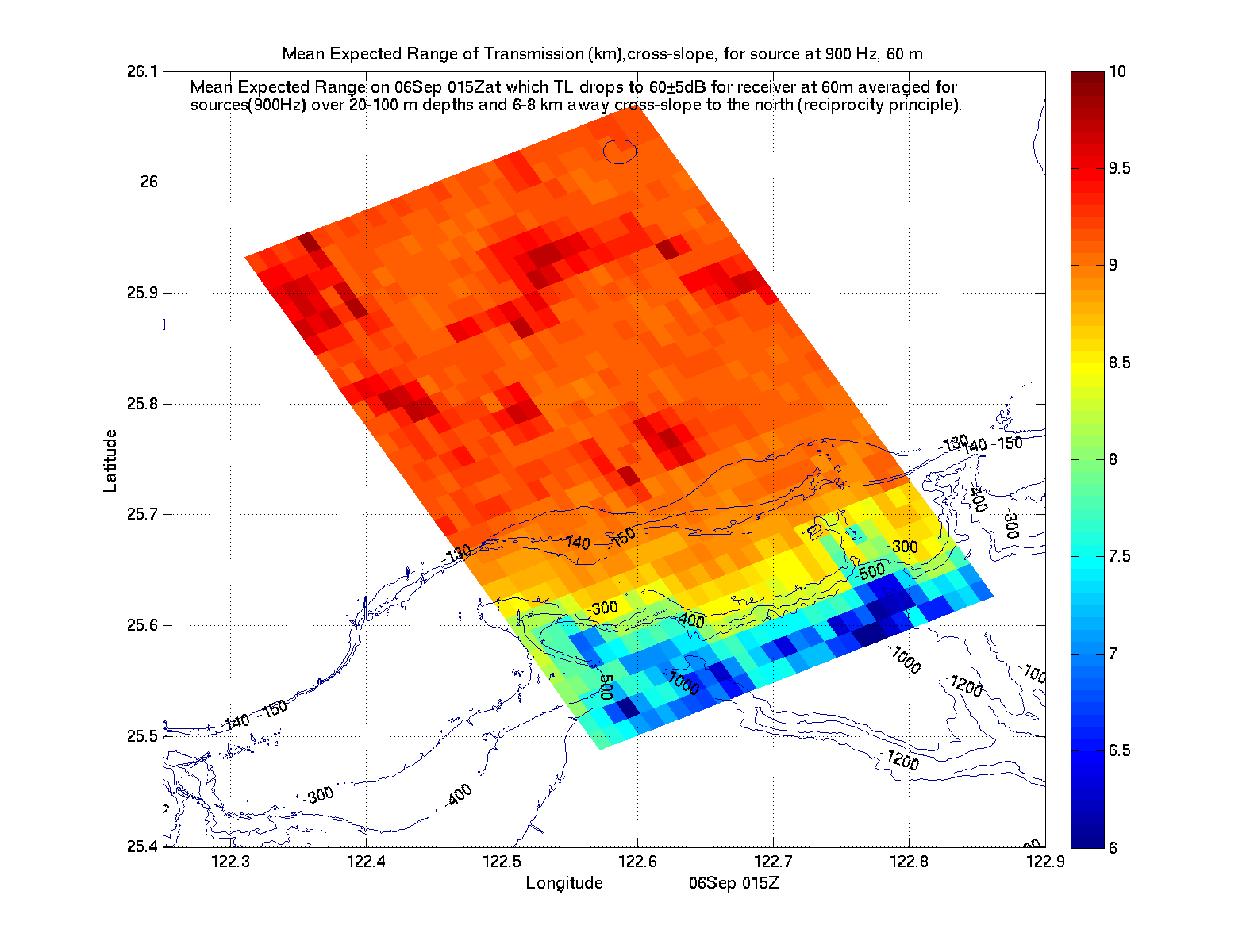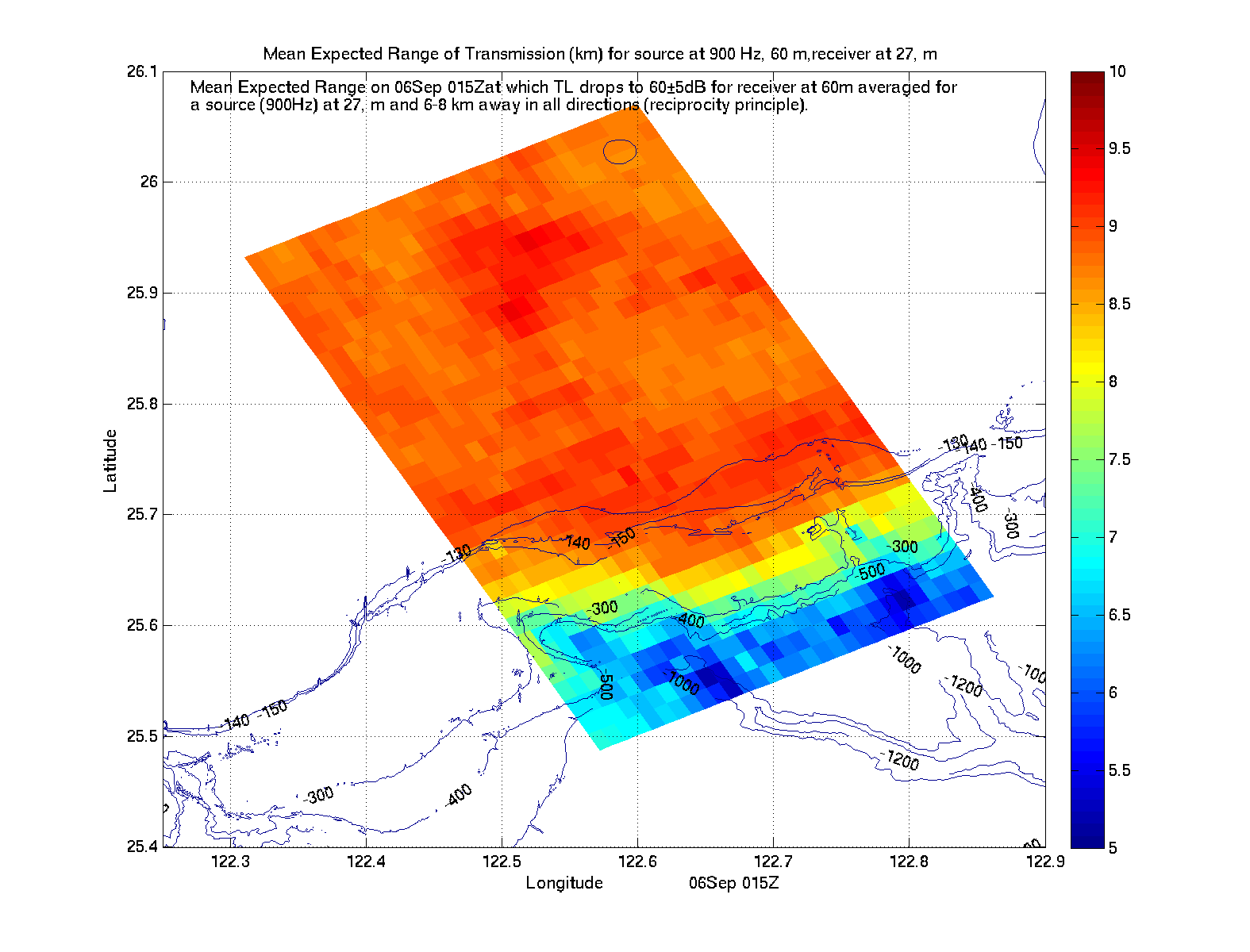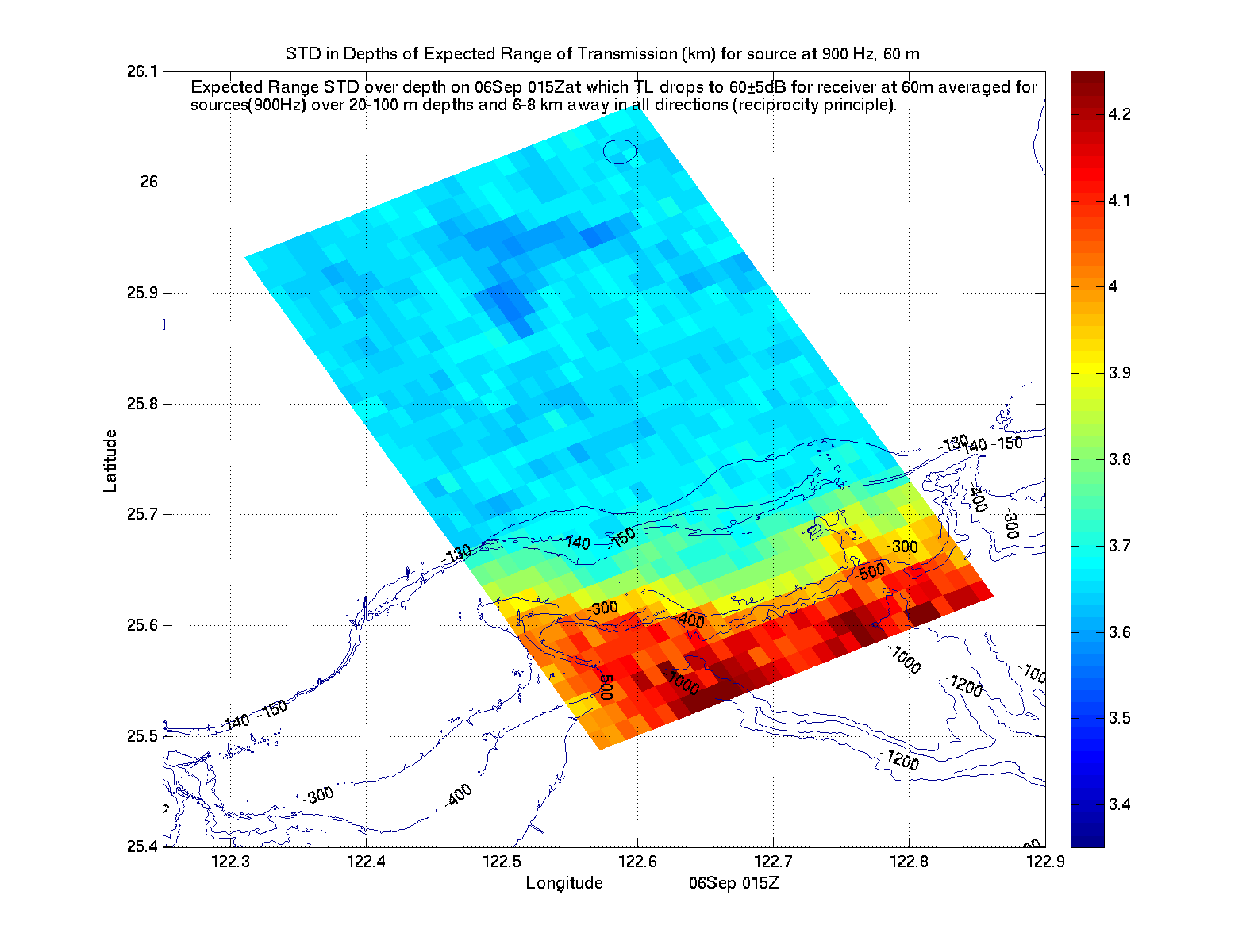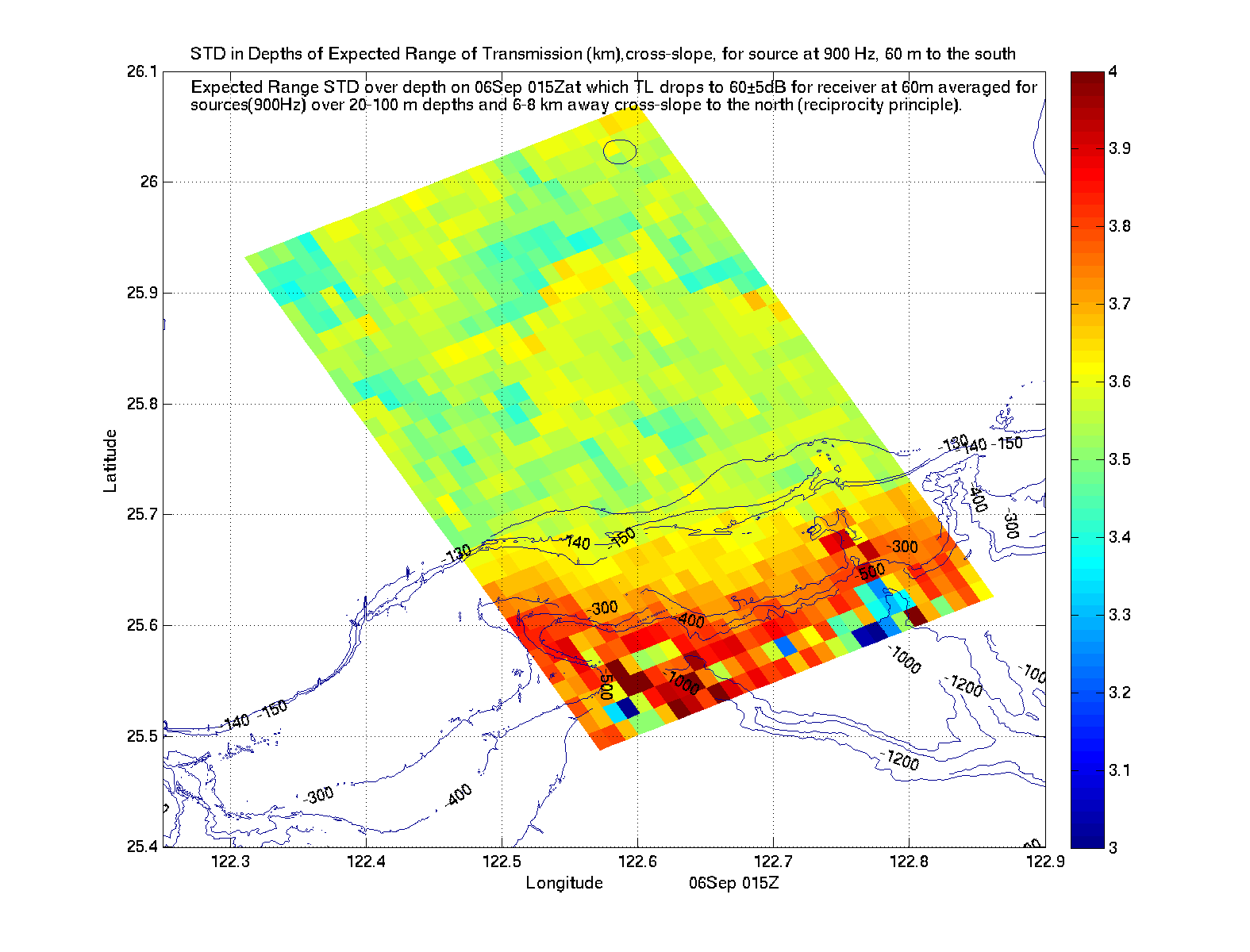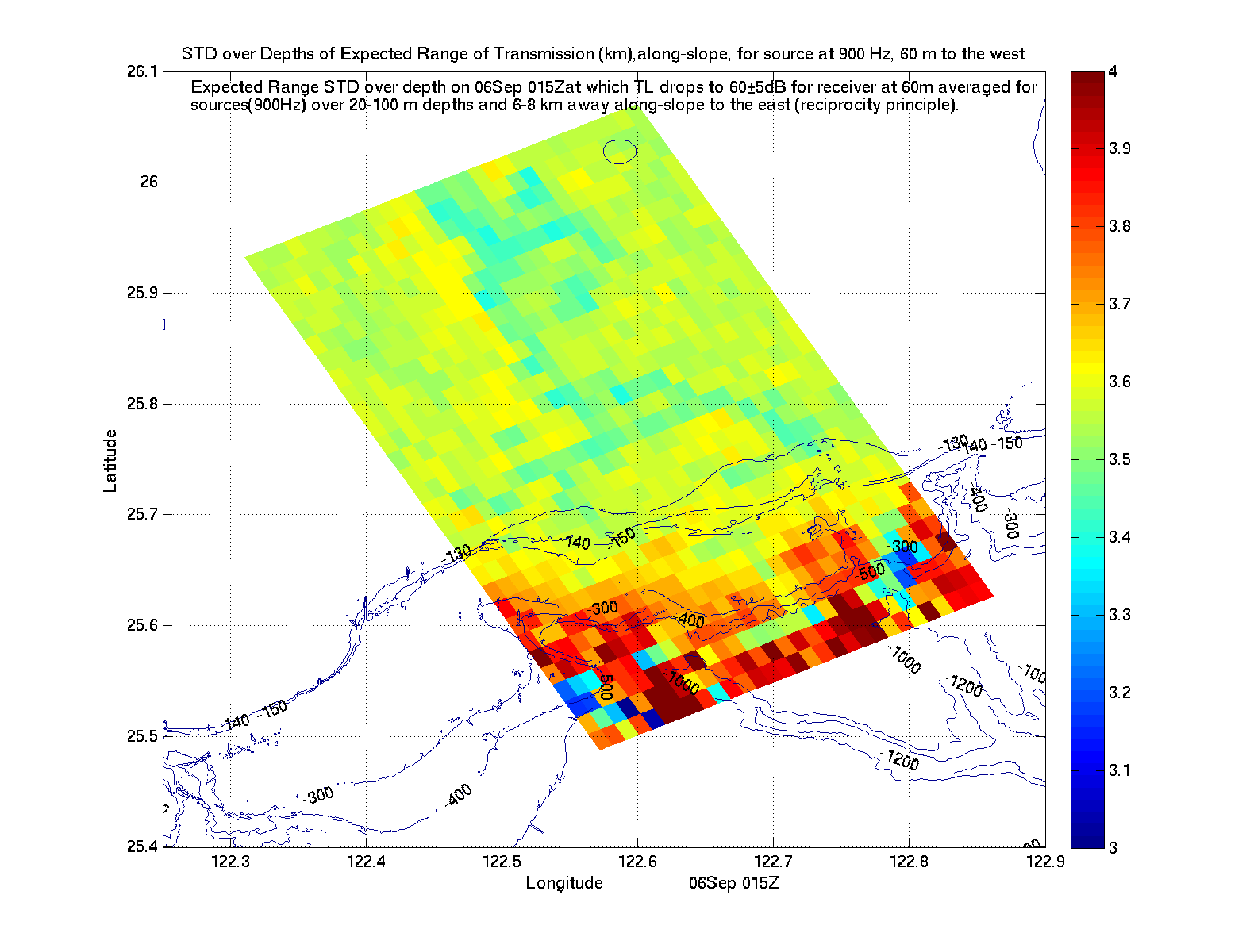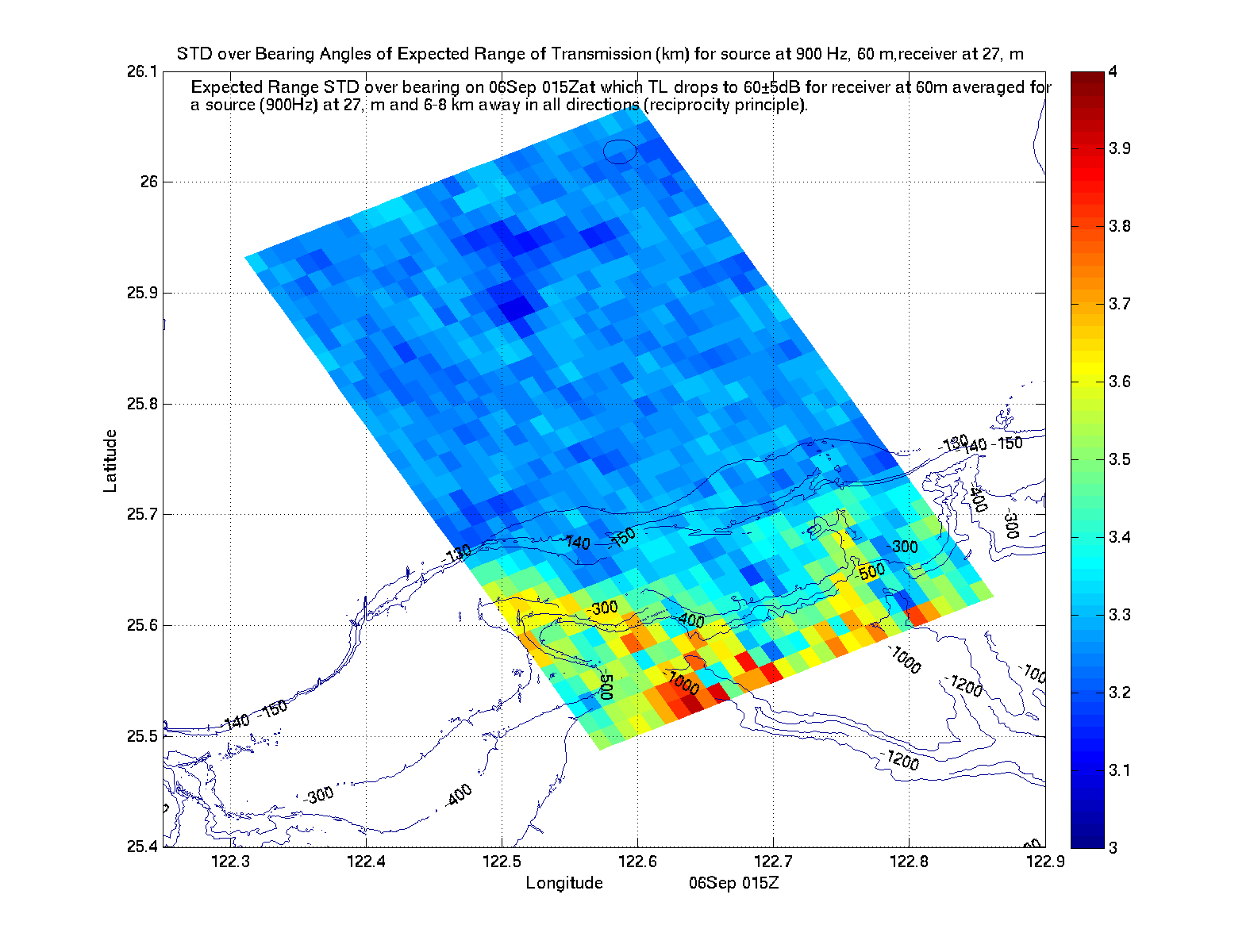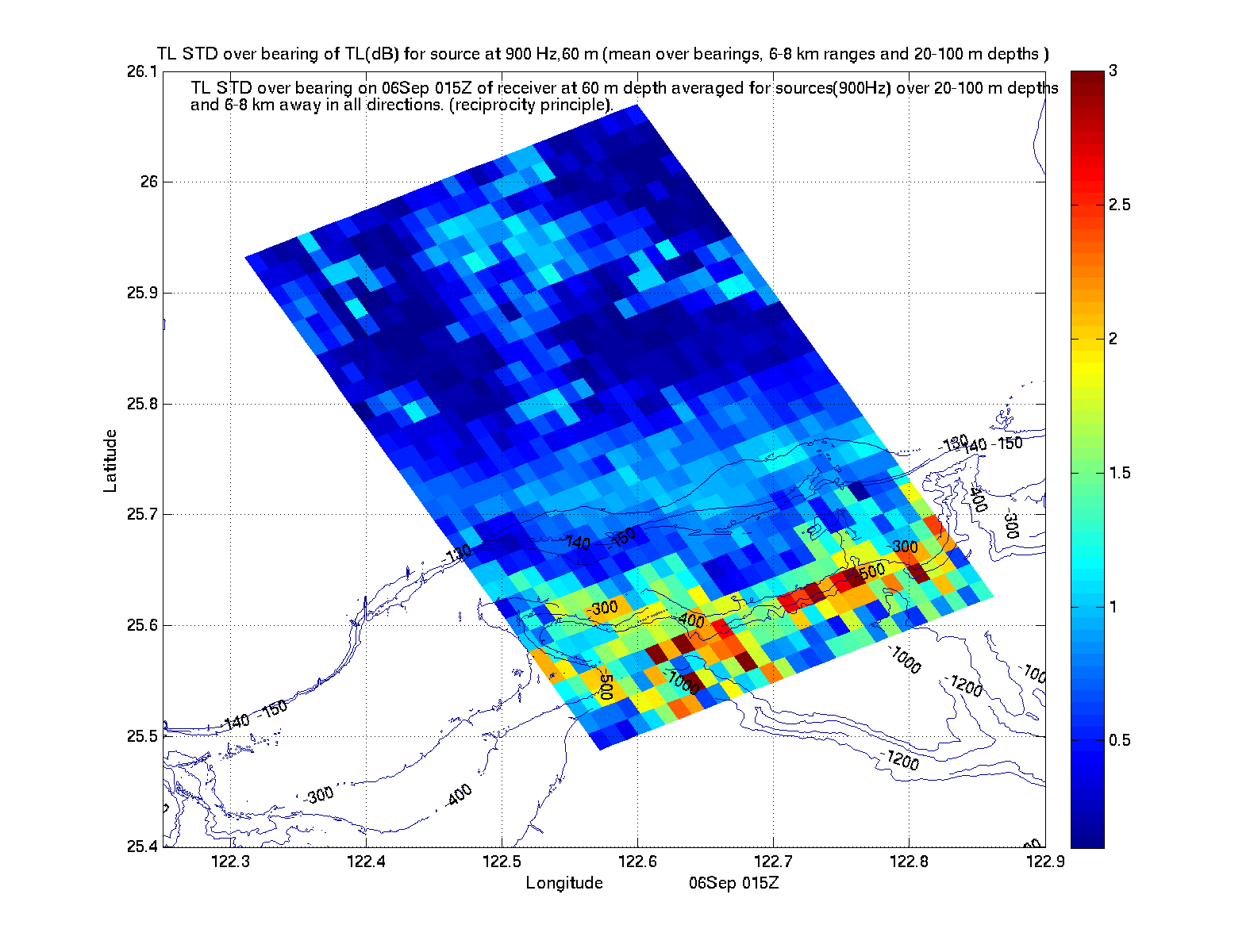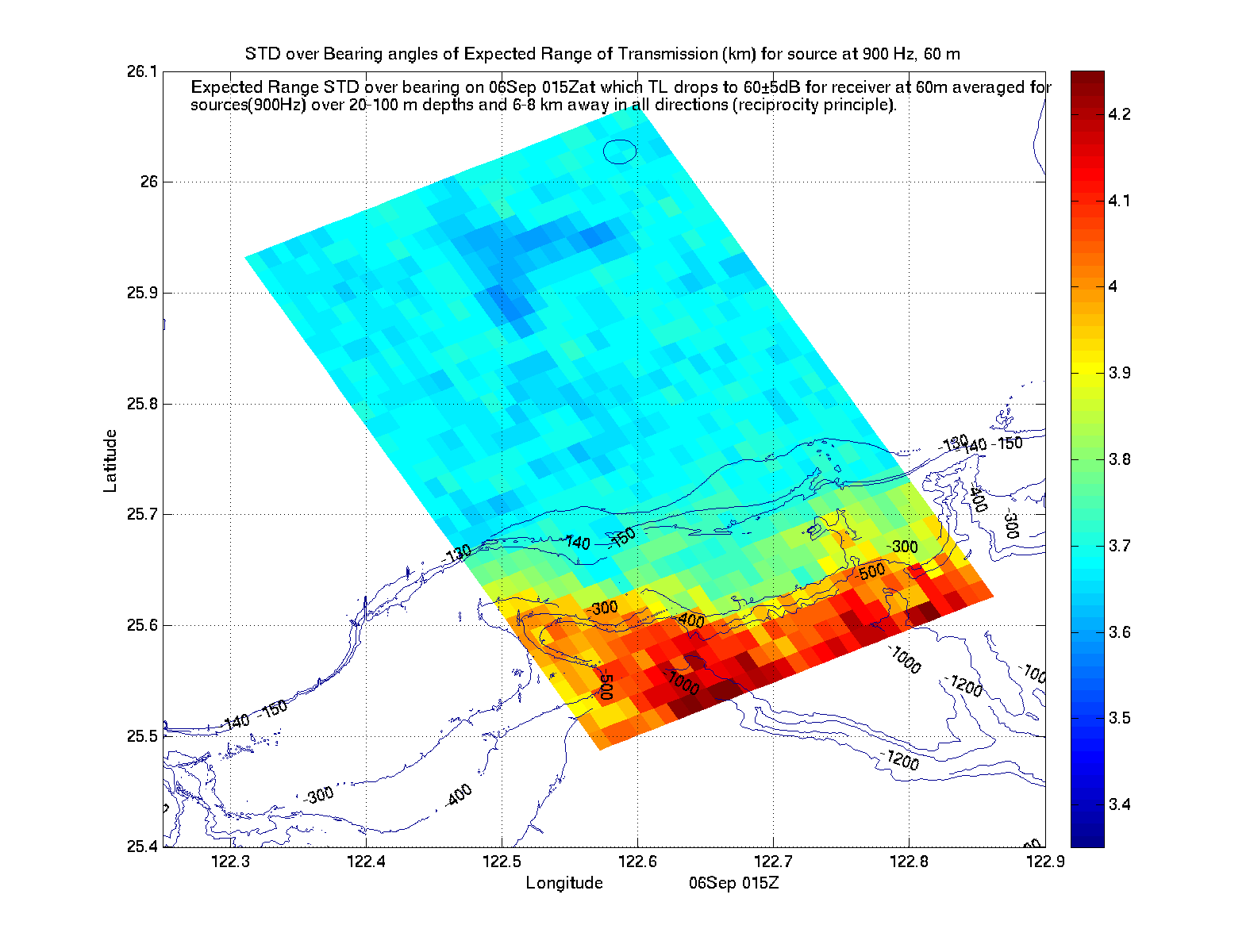| Cross-Slope Mean TL Over Zime - East Location | ||
|---|---|---|
| East Location | Mean TL Over Time - Northward Propagation | Mean TL Over Time - Southward Propagation |
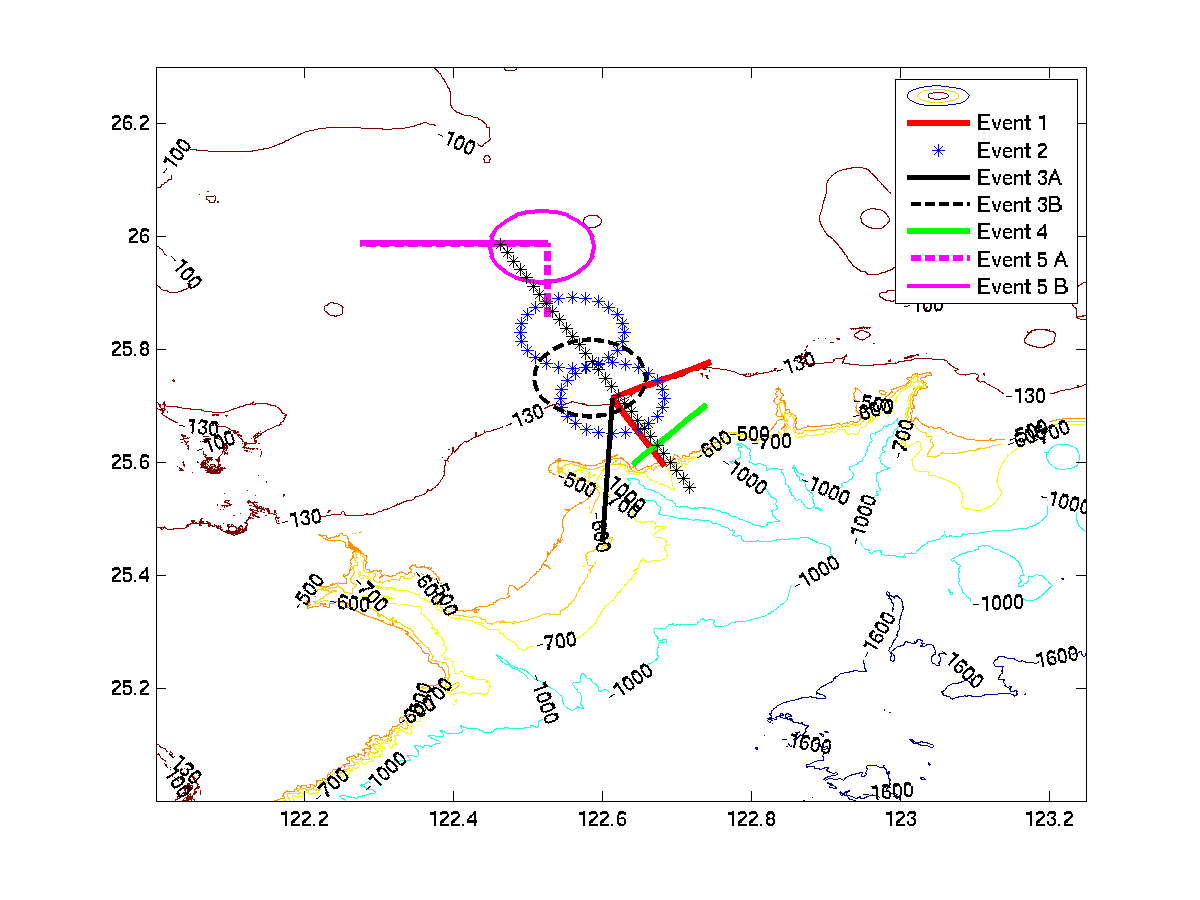 |
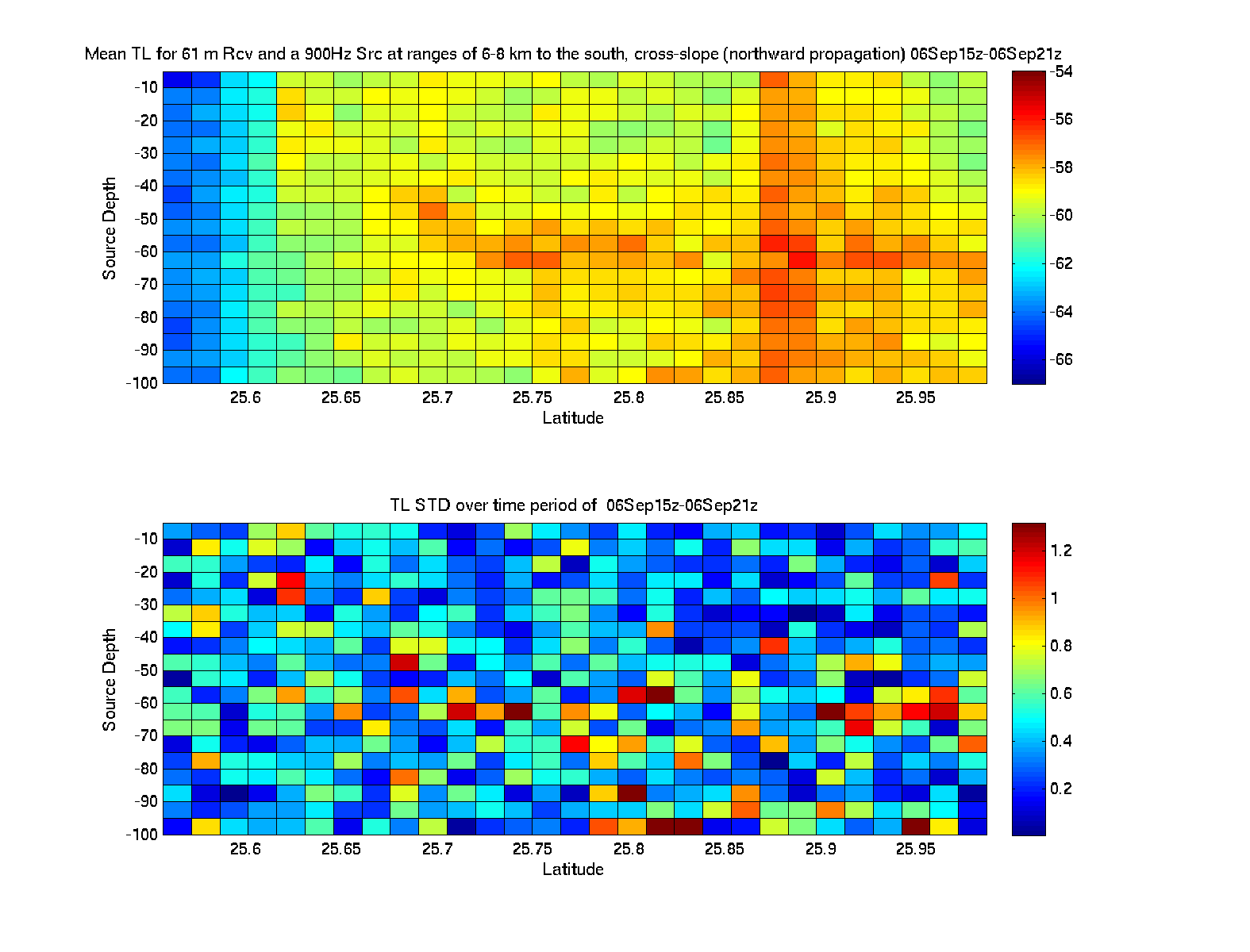 |
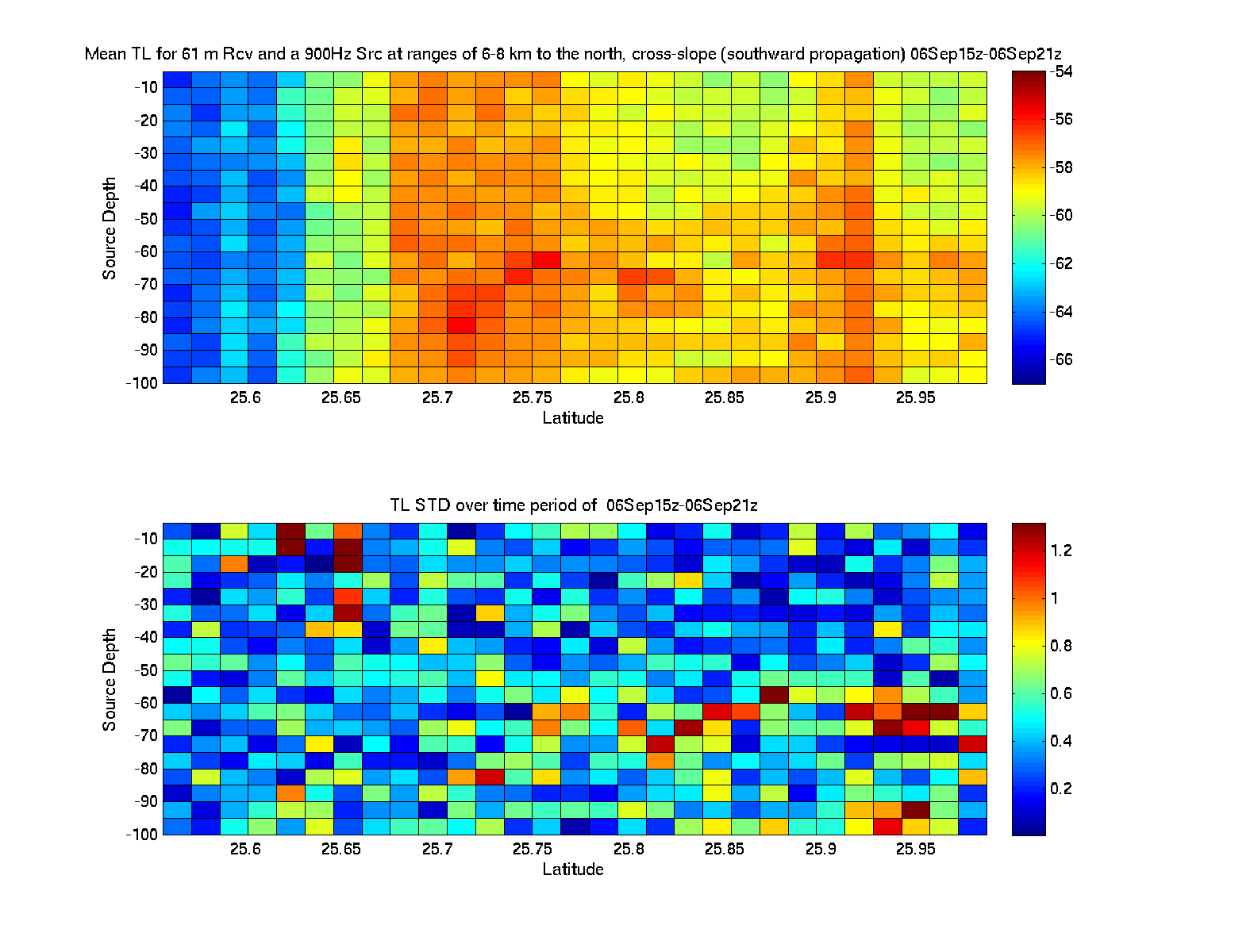 |
| Cross-Slope Mean TL Over Zime - West Location | ||
|---|---|---|
| West Location | Mean TL Over Time - Northward Propagation | Mean TL Over Time - Southward Propagation |
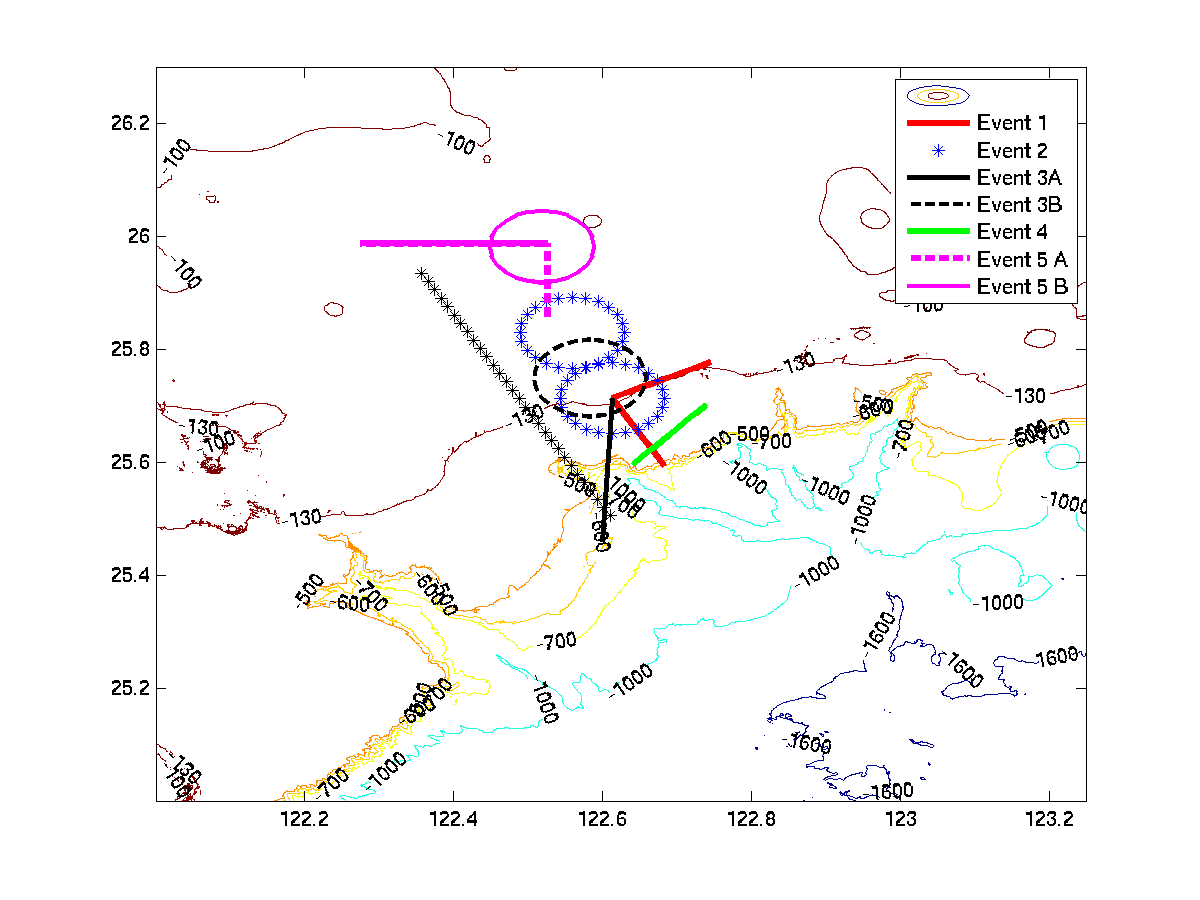 |
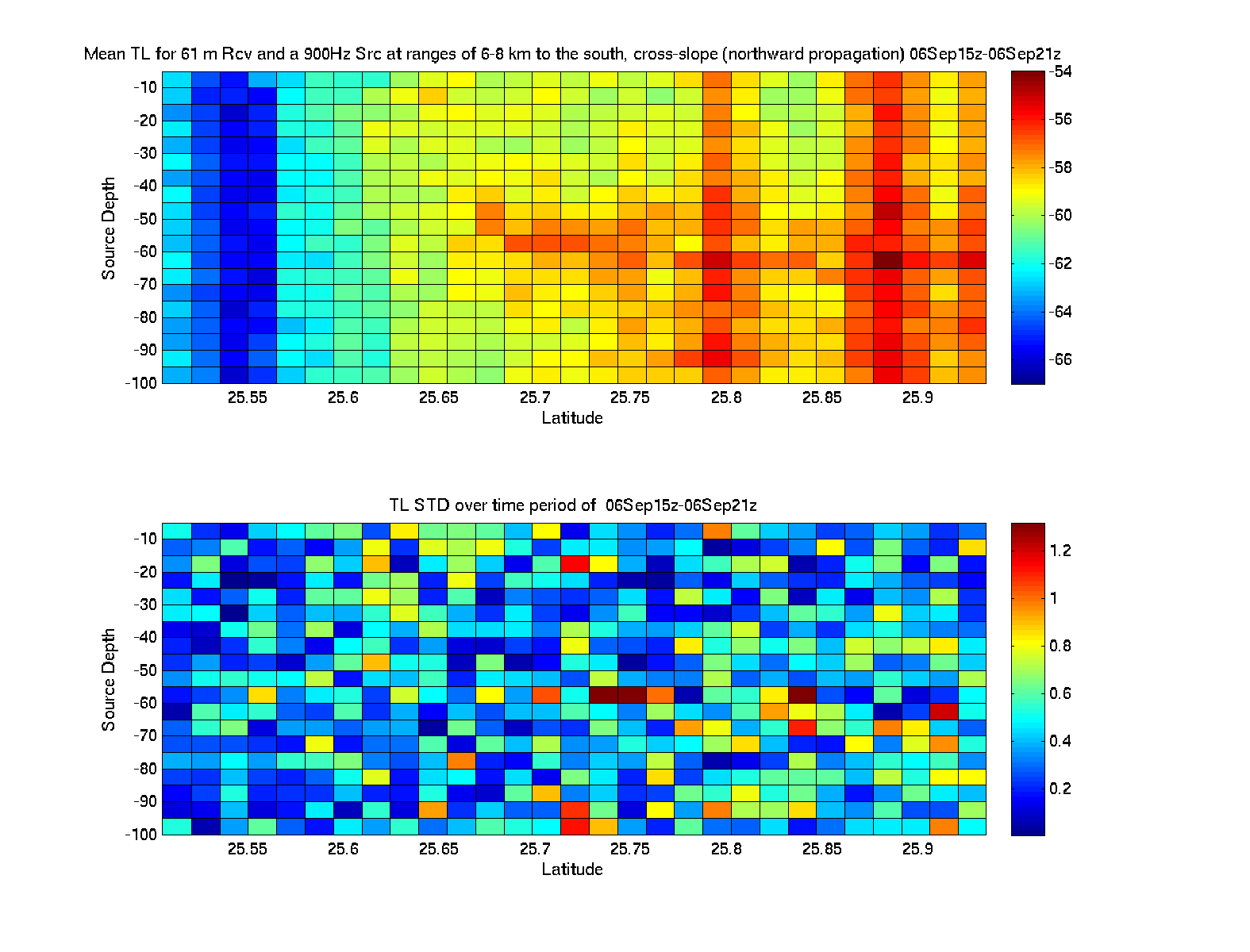 |
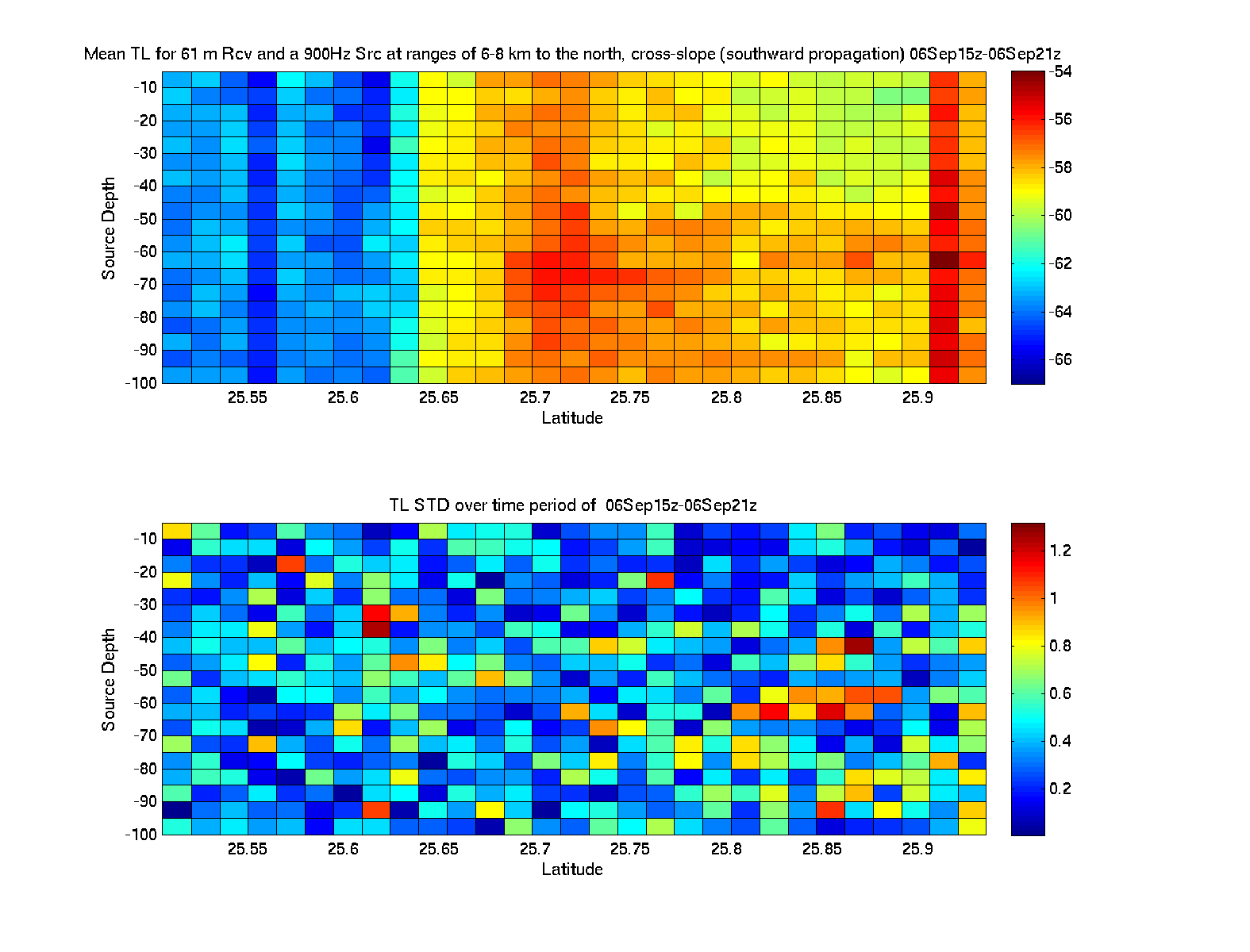 |
| UTC and Taiwan time conversion | ||||||||
|---|---|---|---|---|---|---|---|---|
| UTC | 0000 | 0300 | 0600 | 0900 | 1200 | 1500 | 1800 | 2100 |
| CST | 0800 | 1100 | 1400 | 1700 | 2000 | 2300 | 0200 (+1) | 0500 (+1) |
| Available Forecast NetCDF Files | ||
|---|---|---|
| Physics Fcst for Sep 5-7 | MIT_phys_2009090408_2009090500_2009090700_03h.nc.gz | |
| Acoustics Fcst for Sep05 | 1500Z | MIT_acoustic_TL_2009090408_2009090615_2009090615_00h_900.nc.gz |
| 1800Z | MIT_acoustic_TL_2009090408_2009090618_2009090618_00h_900.nc.gz | |
| 2100Z | MIT_acoustic_TL_2009090408_2009090621_2009090621_00h_900.nc.gz | |
The file names can be interpreted as follows (all times are in UTC):
